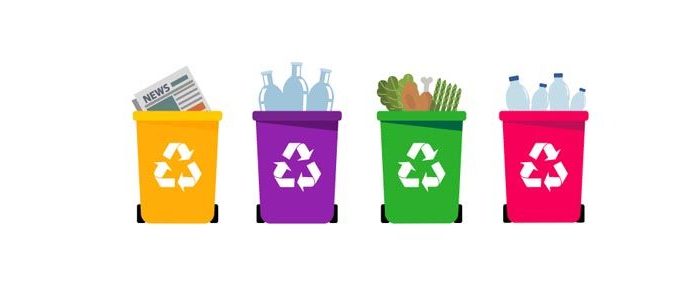Types Of Waste Reduction And Recycling
Want to know how to deal with the many sorts of waste that your company might generate in terms of waste management?
When we talk about waste, we’re talking about a broad category of things, including a wide range of materials and disposal methods. A labyrinth of questions arises when it comes to garbage disposal, recycling, and hazardous waste management.
Waste management can take many forms, each of which will necessitate a unique way of waste disposal, which must be handled by a company with experience in that area.
Toxic Waste
The term “recycling” refers to the process of reusing or recovering waste materials. Recycling can be done in a variety of ways, including physical reprocessing, biological reprocessing, and the recovery of energy.
Recycling is good for the environment. As a result, less unusable material is dumped in landfills, helping to achieve zero waste and sustainability goals. Recyclable solid waste includes the following:
- Mail, newspapers, and magazines all use paper and card.
- Plastics
- tins made of aluminium or steel
- packaging for food
- Ceramic and glass artefacts
- Batteries and inkjet cartridges
- Bulbs
Physical reprocessing is one of the most popular methods of processing. This is a technique for recycling garbage into usable components for future manufacturing.
Discarded Food
In addition to plants and food leftovers, organic matter can be formed from a variety of other materials. After being recycled in this manner, the organic matter produced can be put to agricultural use. Waste products are typically placed in a designated receptacle and allowed to decay.
Utilization Of Waste Materials To Generate Energy
In the final stage of recycling, waste to energy recovery is used to generate electricity. Non-recyclable waste items are converted into heat, electricity, and fuel through a number of procedures in the Waste to Energy WtE process. Non-recyclable garbage can be utilised again to create this form of energy, making it a renewable resource.
Waste Of All Kinds

Nonhazardous, offensive, clinical or unrecyclable trash falls into this category. As a general rule, it is collected and disposed of in landfills by municipalities or private businesses. National waste reduction strategies include programmes such as reuse and recycling, as well as public education on the environmental benefits of recycling.
The proper and safe disposal of general trash is always required. Black bins are used to gather waste, which is then dumped into wheeled bins & skips until they are picked up. Disposing of hazardous material in regular trash is a violation of federal and state regulations.
Hazmat Ware
Every form of garbage that is dangerous in some way is considered hazardous waste.
You and the environment could be in danger if you don’t properly dispose of these goods. The proper disposal of any and all hazardous material should therefore be handled by an established waste management company.
Hazardous Waste Can Be Disposed Of In One Of Four Ways:
It is possible to recycle some hazardous wastes into new products. Circuit boards & lead-acid batteries, for example, can bind to other contaminants and later be utilized as fillers in pavement. When hazardous waste are recycled into new goods, their chemical levels are lowered.
Hazardous waste can also be destroyed or incinerated as an alternative method of disposal. Reduces hazardous trash and generates energy for utilized in the process of incineration.
Under inert conditions and at high temperatures, it’s a good method for disposing of hazardous material. When working with PCBs, organic waste, or pesticides, this method is preferred since it avoids the hazards of combustion.
Garbage landfills are places where trash can be dumped once it has been collected. Landfills aren’t what we call land treatment facilities (LTFs).
Untreated Sewage
Both in the home and in the workplace, liquid waste is a typical occurrence. Even rainwater might be included in this garbage because it contains a wide range of substances.
Liquid waste is further divided into non-point source and point source types. There is just one type of liquid waste that may be categorized as point source trash: produced liquid waste. Natural liquid waste, on the other hand, is non-point source waste.

